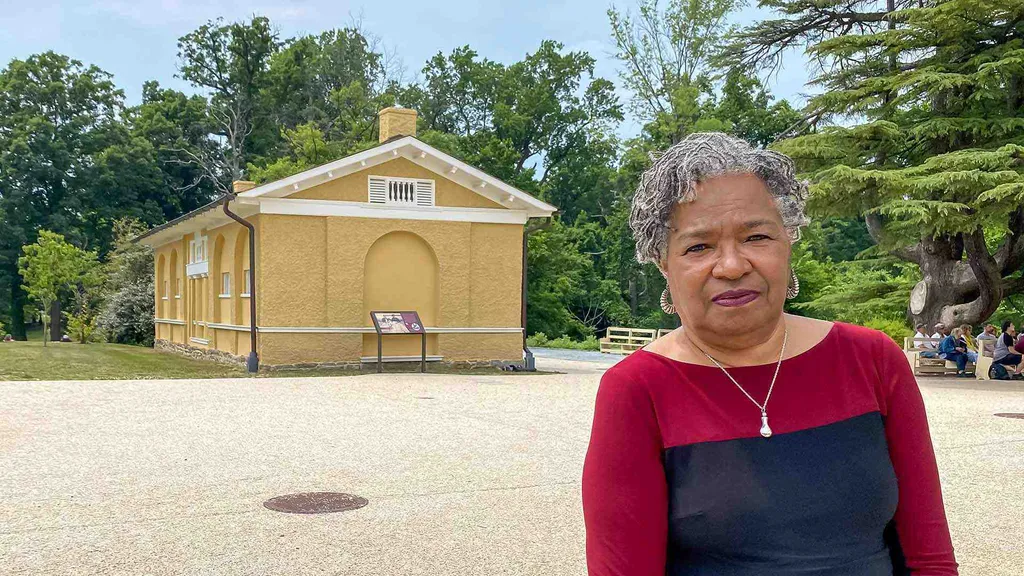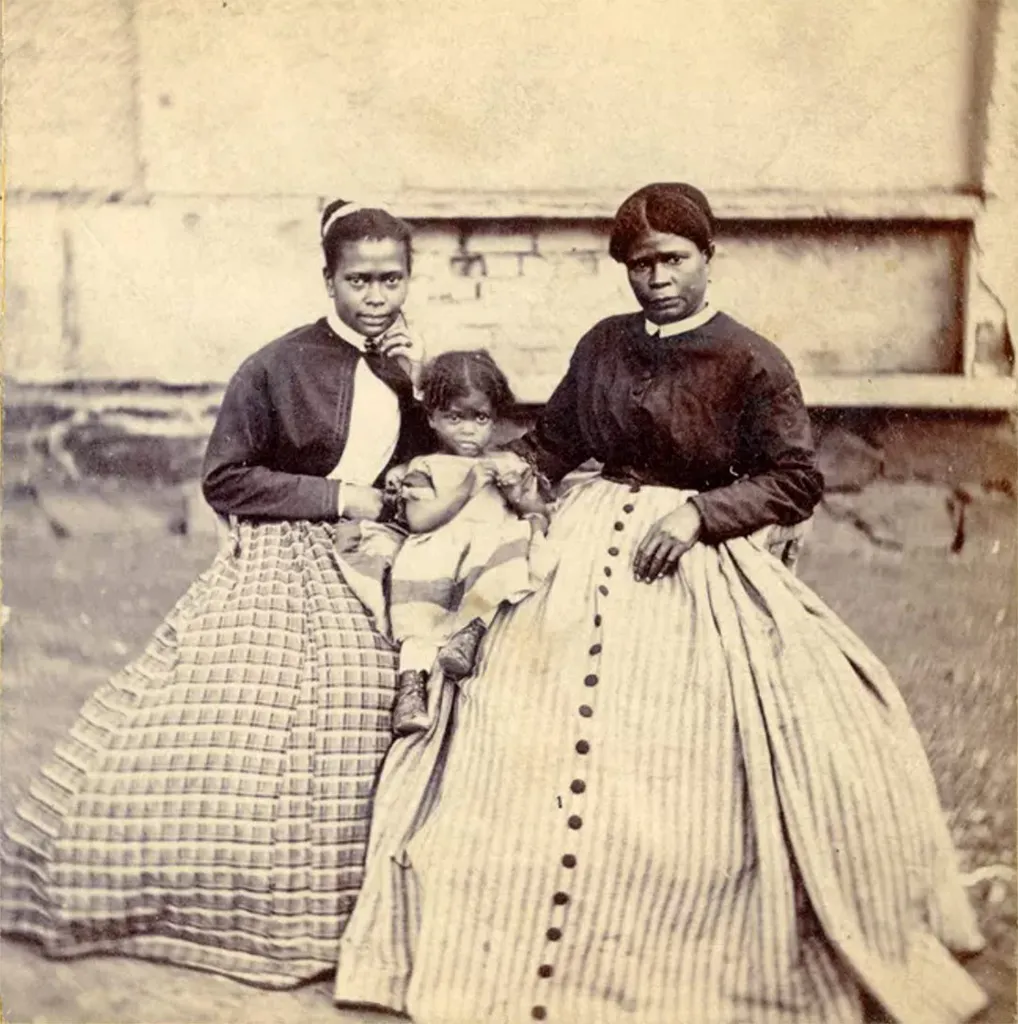- June 14, 2023
- By Maggie Haslam
The view from Arlington House, Robert E. Lee’s former home perched atop Arlington National Cemetery, is both majestic and mournful: D.C.’s monumental skyline stands in the distance, while a sea of Union and Confederate Army gravestones just steps from the Confederate general’s front door serves as a reckoning and reminder of the Civil War’s human cost.
But it’s what’s hidden from view at Arlington House, today a federal memorial to Lee, that occupies University of Maryland Associate Research Professor Cheryl LaRoche. The archeologist and historic preservationist is piecing together the stories of the enslaved men, women and children who lived and worked at the mansion, people whose contributions to the wealth of a nation are often overlooked.

“You can’t talk about this house without talking about enslavement,” she said. “There is not a space among this mansion that an enslaved person did not touch.”
Arlington House was built on Virginia’s side of the Potomac River in 1802 by George Washington Parke Custis on an estate inherited from his father, John Parke Custis, the stepson of President George Washington. The first example of Greek Revival architecture in America, it was built to memorialize Washington and house a collection of his artifacts. Upon Custis’ death in 1857, Arlington House was left to his daughter, Mary, wife of Robert E. Lee, four years before Virginia seceded from the United States and Lee joined the Confederate States Army. After the war, the U.S. government took ownership of Arlington House; the National Park Service (NPS) received jurisdiction in 1933.
In 2021, a $12.35 million donation from philanthropist David M. Rubenstein helped fund restorations of the mansion and slave quarters and shed more light on the lives of the hundreds of people enslaved there. LaRoche and her team were hired by NPS and Arlington House descendants last October to lead an ethnographic history of Arlington House and to connect the estate’s enslaved to modern-day descendants.
“I do it because I think I can help,” she said. “And I’m really dedicated to bringing these families back together.”
Uncovering the lives of the enslaved is a fraught process, says LaRoche, who has been doing this work for over 30 years. In the chaos of the Civil War, records were often burned or scattered across multiple repositories, if they existed at all. Some of those enslaved bore no last names, particularly children fathered by slaveholders. Enslaved families were frequently broken up and relocated across properties as owners acquired more land or sold the individuals as chattel. Upon a slave owner’s death, the enslaved were divided among surviving children through probate, much like the family silver.
“It’s the perfect crime scene because they’ve wiped the murder weapon clean,” she said. “There’s no pathway for what we’re doing here.”
Curating those records is time-consuming and extends beyond just Arlington House, but is necessary to track whole families. LaRoche is using a combination of oral histories, written documentation and landscape mapping, a protocol for ethnography she developed during her dissertation at UMD. She studies tombstones and is tenacious in pursuing sources, including photographs and documentation overlooked by historians; LaRoche is often able to make new identifications and huge leaps in the historical narrative.
“I can comfortably say that when I walk into any project, I probably know the least of anyone in the room,” she said. “There are people around me with more facts and a depth of understanding, but what they cannot do—and why I’m there—is gather these facts and bring them meaning. And I think the reason my work resonates is because I hand you back a life.”

A sought-after archeologist and historian, LaRoche has consulted on dozens of projects around the 19th century Black experience, including numerous sites on the Underground Railroad, the Smithsonian’s National Museum of African American History and Culture, the African Burial Ground project and several other NPS sites such as the Hampton Estate, a former 25,000-acre plantation in Maryland. Efforts by the National Park Service and other historians had failed to identify descendants of Hampton’s enslaved people, so LaRoche in 2016 set a modest benchmark of finding 12 people; instead, she and her team uncovered hundreds. She’ll be taking many of those descendants through Hampton House later this summer.
“Arlington House has layers of history, and there is a concerted effort to make sure these family stories and oral histories are included in that story,” said the NPS’ Mark Maloy, visual information specialist for the George Washington Parkway, along which Arlington House is located. “Cheryl and her team’s work will help fill in those gaps. It’s important to the descendant, but it’s also really important to the site to ensure we’re telling that broader and more inclusive story.”
A more inclusive story might also mean bigger changes at the house. In recent years, descendants of Robert E. Lee, as well as the Parks, Grays and Syphaxes—all enslaved people who worked at Arlington House—have come together to petition a name change from “Arlington House, The Robert E. Lee Memorial” to simply Arlington House.
“I don't feel like we're taking the name away,” Rob Lee, Robert E. Lee’s great-great-grandson, told NPR in April. “I think when you call it the Arlington House, you're just opening it up to more of the families who lived there, honestly. And I think it's just more appropriate.”
Beyond providing a lineage for Arlington House descendants, LaRoche and her team, which includes co-PI Ric Murphy, public historian Courtney Hobson, and UMD applied anthropology and historic preservation graduate student Justin Mohammadi, will develop materials to further push accounts of the enslaved to the fore, including proposed story maps of Arlington House from the perspective of the enslaved.
“This was once a seat of power, turned into hallowed ground,” said LaRoche. “I never thought I would be here now, investigating the people that made that all possible.”
Arlington House Descendants Mark Juneteenth
Several descendants of the enslaved families who lived at Arlington House will participate in Juneteenth Family Day, sponsored by the National Archives Museum from 11 a.m. to 2:30 p.m. on Saturday, June 17 at the museum’s Boeing Learning Center, 701 Constitution Ave. NW. This free, family-friendly event celebrates the annual holiday commemorating the end of legal slavery in the United States.
